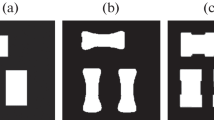Abstract
Detecting lithographic hotspots is significant for VLSI fabrication before transferring the designed circuit layout pattern to silicon. However, the cost of detecting hotspot patterns by simulation is high; moreover, the cost of obtaining positive samples is also high. This paper explores the transferability of models pre-trained by the natural image dataset ImageNet for lithographic hotspot detection, especially to reduce the need for positive sample size. Various state-of-the-art (SOTA) CNN architectures, class weight ratios, and freezing layers are experimented with, all of which are fine-tuned for unbalanced sample datasets. The experimental results show that the migrated model can achieve high hotspot detection accuracy and low false alarm even with limited samples. Moreover, this paper verifies that there is inconsistency in the distribution of the original training set and the test set by merging and resampling the original training set and the test set into a new training set that will be used to train the model with better results, proving that the sample partitioning method is critical for hotspot detection.





Similar content being viewed by others
References
Guo J, Yang F, Sinha S, Chiang C, Zeng X (2012) Improved tangent space based distance metric for accurate lithographic hotspot classification. In: Proceedings of the 49th annual design automation conference on - DAC ’12, ACM Press, pp 1173. https://doi.org/10.1145/2228360.2228577
He K, Zhang X, Ren S, Sun J (2015) Deep Residual Learning, for Image Recognition. arXiv:1512.03385 [cs]
Krizhevsky A, Sutskever I, Hinton GE (2017) ImageNet classification with deep convolutional neural networks. Commun ACM 60(6):84–90. https://doi.org/10.1145/3065386
Matsunawa T, Gao JR, Yu B, Pan DZ (2015) A new lithography hotspot detection framework based on AdaBoost classifier and simplified feature extraction. In: Sturtevant JL, Capodieci L (eds) Design-process-technology co-optimization for manufacturability IX. https://doi.org/10.1117/12.2085790, p 94270S
Matsunawa T, Nojima S, Kotani T (2016) Automatic layout feature extraction for lithography hotspot detection based on deep neural network. In: Capodieci L, Cain JP (eds) Design-Process-Technology Co-Optimization for Manufacturability X. https://doi.org/10.1117/12.2217746, p 97810H
Russakovsky O, Deng J, Su H, Krause J, Satheesh S, Ma S, Huang Z, Karpathy A, Khosla A, Bernstein M, Berg AC, Fei-Fei L (2015) Imagenet large scale visual recognition challenge. Int J Comput Vis (IJCV) 115(3):211–252. https://doi.org/10.1007/s11263-015-0816-y
Shin M, Lee JH (2016) Accurate lithography hotspot detection using deep convolutional neural networks. J Micro/Nanolith MEMS MOEMS 15(4):043,507. https://doi.org/10.1117/1.JMM.15.4.043507
Simonyan K, Zisserman A (2015) Very Deep Convolutional Networks for Large-Scale image recognition. In: ICLR 2015 : international conference on learning representations 2015
Szegedy C, Vanhoucke V, Ioffe S, Shlens J, Wojna Z (2015) Rethinking the Inception Architecture, for Computer Vision. arXiv:1512.00567 [cs]
Torres JA (2012) ICCAD-2012 CAD Contest in fuzzy pattern matching for physical verification and benchmark suite. In: Proceedings of the international conference on computer-aided design - ICCAD ’12, ACM Press, pp 349. https://doi.org/10.1145/2429384.2429457
Wen W-Y, Li J-C, Lin S-Y, Chen J-Y, Chang S-C (2014) A Fuzzy-Matching model with grid reduction for Lithography Hotspot Detection. IEEE Trans Comput-Aided Design of Integr Circuits Syst 33(11):1671–1680. https://doi.org/10.1109/TCAD.2014.2351273
Xiao T, Li H, Ouyang W, Wang X (2016) Learning deep feature representations, with domain guided dropout for person re-identification. arXiv:1604.07528 [cs]
Yang H, Luo L, Su J, Lin C, Yu B (2017) Imbalance aware lithography hotspot detection: A deep learning approach. J Micro/Nanolith MEMS MOEMS 16(3):033,504
Yang H, Su J, Zou Y, Ma Y, Yu B, Young EFY (2019) Layout Hotspot Detection With Feature Tensor Generation and Deep Biased Learning. IEEE Trans Comput-Aided Design Integr Circuits Syst 38(6):1175–1187. https://doi.org/10.1109/TCAD.2018.2837078
Yosinski J, Clune J, Bengio Y, Lipson H (2014) How transferable are features in deep neural networks. In: Advances in neural information processing systems 27, pp 3320–3328
Yu YT, Lin GH, Jiang IHR, Chiang C (2015) Machine-Learning-Based Hotspot detection using topological classification and Critical Feature Extraction. IEEE Trans Comput-Aided Design Integr Circuits Syst 34(3):460–470. https://doi.org/10.1109/TCAD.2014.2387858
Zhang H, Yu B, Young EFY (2016) Enabling online learning in lithography hotspot detection with information-theoretic feature optimization. In: Proceedings of the 35th international conference on computer-aided design - ICCAD ’16, ACM Press, pp 1–8. https://doi.org/10.1145/2966986.2967032
Author information
Authors and Affiliations
Corresponding author
Additional information
Responsible Editor: V. D. Agrawal
Publisher’s Note
Springer Nature remains neutral with regard to jurisdictional claims in published maps and institutional affiliations.
This work was supported in part by the National Natural Science Foundation of China under Grant 61871089.
Rights and permissions
About this article
Cite this article
Xiao, Y., Huang, X. & Liu, K. Model Transferability from ImageNet to Lithography Hotspot Detection. J Electron Test 37, 141–149 (2021). https://doi.org/10.1007/s10836-021-05925-5
Received:
Accepted:
Published:
Issue Date:
DOI: https://doi.org/10.1007/s10836-021-05925-5




